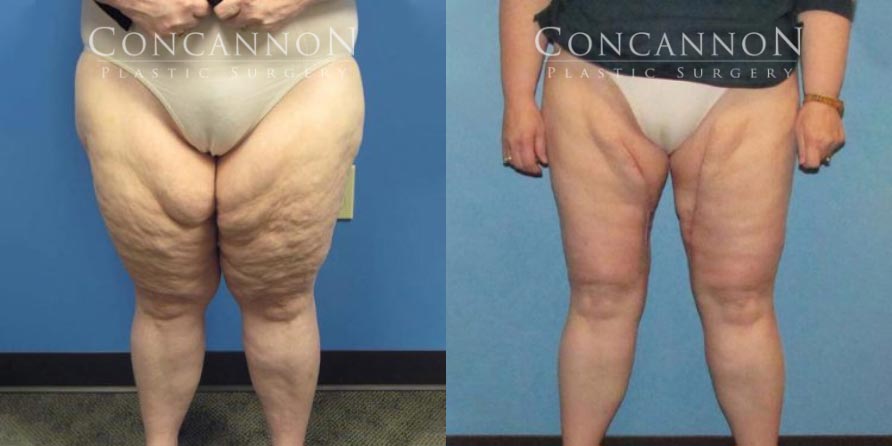
A thigh lift, also known as thighplasty, is a surgical procedure that improves the contour of the thighs and buttocks by tightening loose skin in the area. This procedure may be recommended to patients who have excess, loose and sagging skin in the thighs due to a large amount of weight loss or previous liposuction procedures. A thigh lift is not a substitute for a healthy weight loss program that includes a nutritious, low-calorie diet and exercise. Rather, it is used after the weight loss is complete when resulting sags and dimples in the skin must be addressed. The best candidates for thighplasty are in good general health without any chronic conditions, do not smoke and have realistic expectations for the procedure.

Photo Gallery
Vew the results of previous patients on
Dr. Concannon’s extensive photo gallery
GENERAL INFORMATION
An inner thigh lift targets the skin around the inner thigh, and is often the procedure of choice for patients who are dealing with sagging skin as the result of significant weight loss or due to the aging process. The procedure that Dr. Concannon typically utilizes involves placing the incision along the inside of the thigh from the groin area to the knee. The skin is tightened circumferentially, tightening the entire thigh, but not requiring the tissue to be “lifted”, which is often unsuccessful and can have disappointing results. Liposuction is typically done in conjunction with an inner thigh lift.
Where Your Surgery Will Be Performed
A thigh lift is usually performed as an outpatient procedure, either under general anesthesia if extensive dissection will be required, or IV sedation in our office operating room suite. The area is marked prior to surgery while the patient is in a standing position. The procedure generally takes approximately two to three hours, depending on the patient and what is needed. Deep sutures are used to close any incisions, which will dissolve within four months. It is important for a patient to have someone helping them get home after the surgery and if possible, to help for a couple of days afterward.
After Surgery
Patients are usually advised to take seven to ten days off work for recovery time. Some bruising and swelling may occur after the surgery, and could last up to one month. The majority of patients recover well after a thigh lift, with most returning to all normal activities within four to six months.
Risks
As with any type of surgical procedure, there are some risks involved with thighplasty. These risks might include infection or swelling at the site of the incision, fluid accumulation and blood clots, changes in the sensation of the skin such as numbness, pain and poor wound healing. Some of these risks can be compounded by smoking too close to the date of surgery, since smoking can decrease the blood supply to the body’s tissues.
One way to reduce risks after any surgical procedure is to strictly follow Dr. Concannon’s post-operative directions. A list of instructions is sent home with the patient after surgery with specific guidelines to follow to ensure a full recovery. Choosing a qualified, experienced surgeon will also help to ensure that the procedure is a success.

